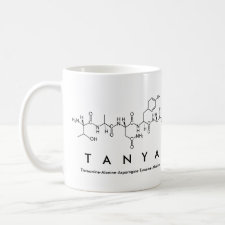
Authors: Sergeyeva T, Yarynka D, Piletska E, Lynnik R, Zaporozhets O, Brovko O, Piletsky S, El'Skaya A
Article Title: Fluorescent sensor systems based on nanostructured polymeric membranes for selective recognition of Aflatoxin B1.
Publication date: 2017
Journal: Talanta
Volume: 175
Page numbers: 101-107.
Alternative URL: http://www.sciencedirect.com/science/article/pii/S0039914017307427
Abstract: Nanostructured polymeric membranes for selective recognition of aflatoxin B1 were synthesized in situ and used as highly sensitive recognition elements in the developed fluorescent sensor. Artificial binding sites capable of selective recognition of aflatoxin B1 were formed in the structure of the polymeric membranes using the method of molecular imprinting. A composition of molecularly imprinted polymer (MIP) membranes was optimized using the method of computational modeling. The MIP membranes were synthesized using the non-toxic close structural analogue of aflatoxin B1, ethyl-2-oxocyclopentanecarboxylate as a dummy template. The MIP membranes with the optimized composition demonstrated extremely high selectivity towards aflatoxin B1 (AFB1). Negligible binding of close structural analogues of AFB1 - aflatoxins B2 (AFB2), aflatoxin G2 (AFG2), and ochratoxin A (OTA) was demonstrated. Binding of AFB1 by the MIP membranes was investigated as a function of both type and concentration of the functional monomer in the initial monomer composition used for the membranes' synthesis, as well as sample composition. The conditions of the solid-phase extraction of the mycotoxin using the MIP membrane as a stationary phase (pH, ionic strength, buffer concentration, volume of the solution, ratio between water and organic solvent, filtration rate) were optimized. The fluorescent sensor system based on the optimized MIP membranes provided a possibility of AFB1 detection within the range 14-500 ng mL-1 demonstrating detection limit (3σ) of 14 ng mL-1. The developed technique was successfully applied for the analysis of model solutions and waste waters from bread-making plants
Template and target information: aflatoxin B1, AFB1
Author keywords: nanostructured polymers, Molecularly imprinted polymeric membranes, sensors, Fluorescent chemo-sensing, mycotoxins, Aflatoxin B1



Join the Society for Molecular Imprinting

New items RSS feed
Sign-up for e-mail updates:
Choose between receiving an occasional newsletter or more frequent e-mail alerts.
Click here to go to the sign-up page.
Is your name elemental or peptidic? Enter your name and find out by clicking either of the buttons below!
Other products you may like:
 MIPdatabase
MIPdatabase









